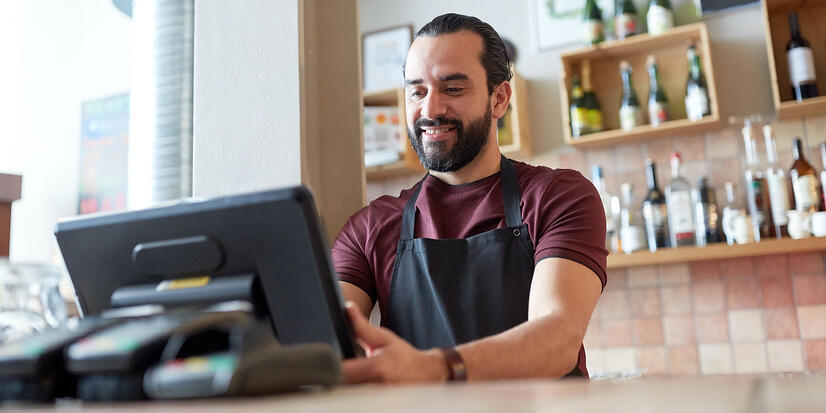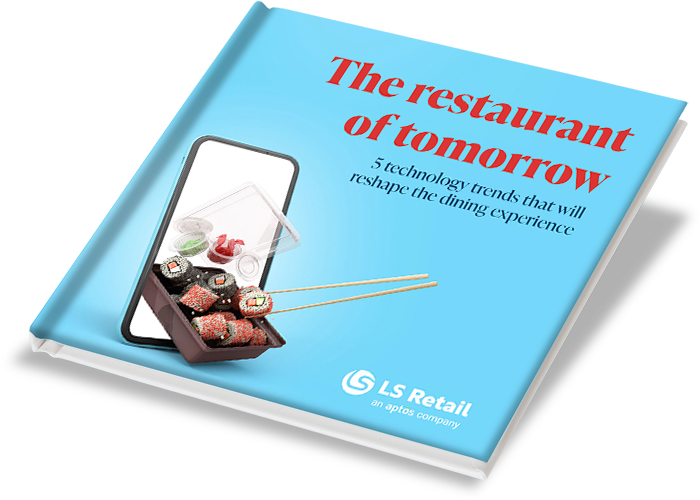Great service is critical to the success of your restaurant business. But it’s a challenge to deliver a fantastic atmosphere while keeping costs down and productivity up. And all your effort and hard work can end up being for nothing, if you don’t have technology that supports your goals.
Having seen the benefits of unified commerce software in the retail industry, many restaurants are now substituting their legacy systems – which are often made of separate, loosely connected software solutions – with a unified platform that brings together all business processes and data in one place.
Here are six reasons why you should consider moving to a unified platform to run your restaurants.
1. Get rid of disconnected, error-prone processes
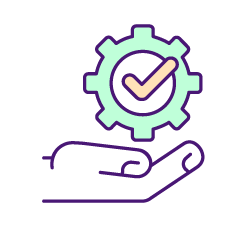 In the past, to run your business you needed a separate accounting software solution, a Point of Sale (POS) system, a kitchen management system, reporting tools (often Excel sheets), vendor management, business intelligence tools, and possibly a few more software systems.
In the past, to run your business you needed a separate accounting software solution, a Point of Sale (POS) system, a kitchen management system, reporting tools (often Excel sheets), vendor management, business intelligence tools, and possibly a few more software systems.
Not anymore. Today you can get all the functionality you need for your restaurant in one system. And when you only use one system, all your information is collected in one place – easy to access, and straightforward.
Take the example of Rustan Coffee, which runs the Starbucks franchise in the Philippines. The company used to operate the business with several disconnected systems. These software solutions were poorly integrated, and employees had to perform many processes manually, which took a lot of time. And at the end, the company never had a clear overview of its business data.
Since moving to the LS Retail unified platform, Starbucks Philippines has largely removed human error. Headquarters can see how each café location is performing in real time. They can access all sales data from the POS stations, understand what promotions are performing well, what stock isn’t selling, and how to take action.
2. Get a single version of the truth
 Imagine the difference to your business if every department was able to access and operate on the same data. That’s exactly what you get with a unified platform. The system brings together data from all facets of your business. When you access it, you know that all information is correct, and that you are seeing the same figures as your colleagues in a different location or department – no need to phone the restaurant locations, or combine Excel files.
Imagine the difference to your business if every department was able to access and operate on the same data. That’s exactly what you get with a unified platform. The system brings together data from all facets of your business. When you access it, you know that all information is correct, and that you are seeing the same figures as your colleagues in a different location or department – no need to phone the restaurant locations, or combine Excel files.
Nik Baker’s is a café and bakery chain in Northern India. Before switching to LS Retail software, the company struggled with unreliable data, which came from juggling multiple systems at the same time. “Our inventory was haywire, we could never see the real status of products at our locations,” they told us. Supply chain planning was “a tedious task”, with stock often running out in the evenings. Today, all stores and departments are connected through one system, and Nik Baker’s finally has reliable inventory data, which enables them to plan their purchasing efficiently, without wasting time and resources.
3. Give guests clear, up-to-date information
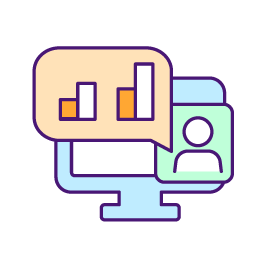 There’s a lot to be said for going the extra mile to make your guests feel welcome and looked after when they dine with you. In fact, research by American Express found that 7 out of 10 US consumers have spent more money to do business with a company that delivers great service. But what if your business systems are preventing you from delivering great experiences?
There’s a lot to be said for going the extra mile to make your guests feel welcome and looked after when they dine with you. In fact, research by American Express found that 7 out of 10 US consumers have spent more money to do business with a company that delivers great service. But what if your business systems are preventing you from delivering great experiences?
Color Line is one of the largest cruise ferry lines in Scandinavia. Since implementing unified platform LS Central for restaurants, Color Line can offer a relaxing and fully connected experience from the moment passengers start their journey until they disembark the ship.
Color Line can now manage all menus, prices, and offers centrally, at headquarters, and automatically synchronize the information with the ships' on-board systems. Data is immediately transmitted to all touchpoint, so guests can always see the day’s menus, active offers, and dish availability on information screens and self-service terminals in restaurants and cafes across the ship.
4. Spend less time on staff training
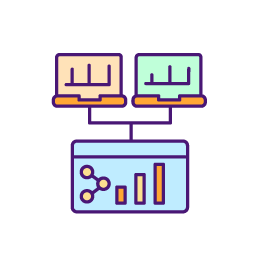 Training staff to use different systems across your business is no easy task, and can result in a significant time investment. When many members of your workforce are temporary or likely to move on fast, it can really hurt your business to waste hours on constantly training new people from scratch. But it doesn’t need to be this hard.
Training staff to use different systems across your business is no easy task, and can result in a significant time investment. When many members of your workforce are temporary or likely to move on fast, it can really hurt your business to waste hours on constantly training new people from scratch. But it doesn’t need to be this hard.
Businesses that roll out a unified platform across their organization are finding that they only need to train staff once. If the staff member then needs to move roles across departments, whether it’s for just a shift or indefinitely, they already know how to use the system – no time needed for extra training.
The Bistro Group, which manages a highly popular chain of casual dining brands in the Philippines, previously used three different POS systems, plus three different accounting systems. That means six user interfaces, six different business logics, and six separate databases! When the company transitioned to the LS Retail unified platform, staff were initially reluctant to use the system, as they were used to a very different user experience. Once the employees embraced the system, the company saw quick returns. The Bistro Group has now succeeded in standardizing its processes and staff now realize that the technology helps them do their jobs better and saves them a great deal of time.
5. Manage a multi-concept business as one brand
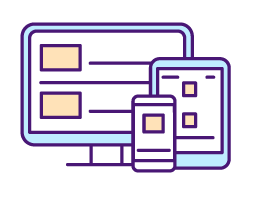 As the traditional barriers between industries are falling down, retailers are opening cafés, hotels, and event dance clubs, and food service businesses are increasing adding retail and entertainment to their offering. Consumers are rewarding these new concepts – as long as they are well executed, and provide guests with a consistent, smooth experience.
As the traditional barriers between industries are falling down, retailers are opening cafés, hotels, and event dance clubs, and food service businesses are increasing adding retail and entertainment to their offering. Consumers are rewarding these new concepts – as long as they are well executed, and provide guests with a consistent, smooth experience.
Combo is a hospitality company that repurposes historical venues in Italy, transforming them into multi-function hospitality spaces with restaurants, bars, accommodation and event areas.
As a multi-concept business, Combo needed a platform to manage retail, F&B and hospitality consistently, with a single, centralized view of the business. “It’s not easy to find a technology partner that can handle all of these services within a single approach,” says Francesco Prone, CFO at Combo. With LS Central for restaurants, Combo can now handle its whole business as one. Back office and financial operations can be managed more easily and accurately, and automations ensure that inventory availability always reflects actual needs, helping Combo keep in stock what guests are looking for.
6. Only deal with one vendor
 Managing and maintaining multiple technology systems can be a real drain on resources and budget. If there is a problem, IT may need to work with multiple vendors – and if the issue has to do with an integration between different systems, you may also have to budget for the time to find a technician who is familiar with the separate software solution involved. Software updates can also be complex and costly when you are working with a constellation of systems – especially when an update to one of the solutions causes the integration to break down.
Managing and maintaining multiple technology systems can be a real drain on resources and budget. If there is a problem, IT may need to work with multiple vendors – and if the issue has to do with an integration between different systems, you may also have to budget for the time to find a technician who is familiar with the separate software solution involved. Software updates can also be complex and costly when you are working with a constellation of systems – especially when an update to one of the solutions causes the integration to break down.
Imagine, then, the difference it could make if you only had to work with one solution, from one technology provider. One system to update, no integrations to maintain, and a single vendor who can provide 24/7 support for your entire business system.
A unified platform to take your business to the next level
Unified commerce has already revolutionized retail, and it’s now set to do the same for the F&B industry.
With the LS Retail solutions for restaurants, you can unify all your business functions and processes, and get a clear overall picture of your entire operation. You can also improve communication between employees, because the system streamlines processes – for example, orders are automatically sent from the POS to the printing stations or screen displays (KDS) in the kitchen, leaving no room for misunderstandings or delays. By centralizing both information and decision-making, our software can help you cut down on food waste and unnecessary operational costs. And, perhaps most important, it allows you to provide the best guest experience, time after time.
Contact us if you’d like to learn more about our unified platforms for restaurants LS Central and LS First, or to get a personalized demo.
